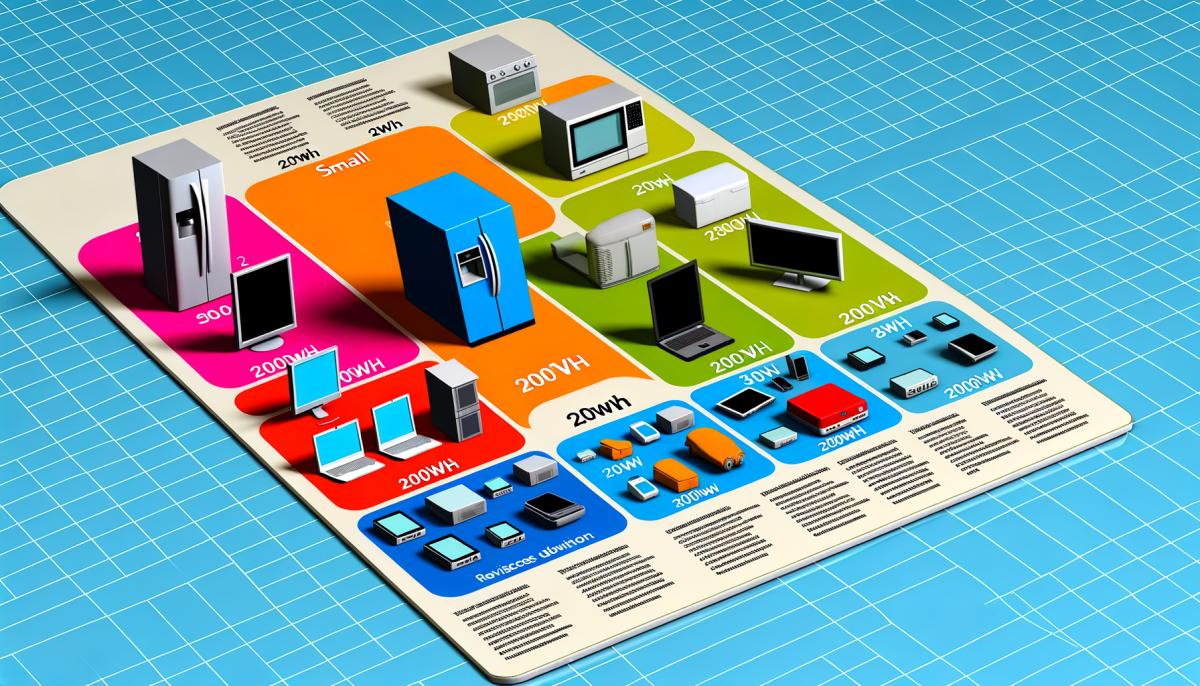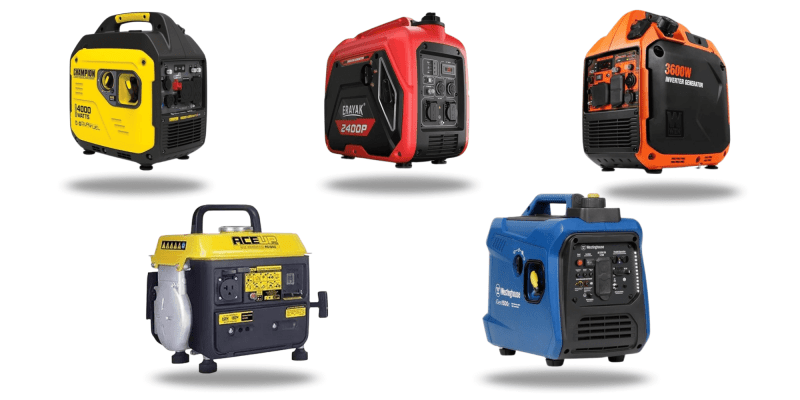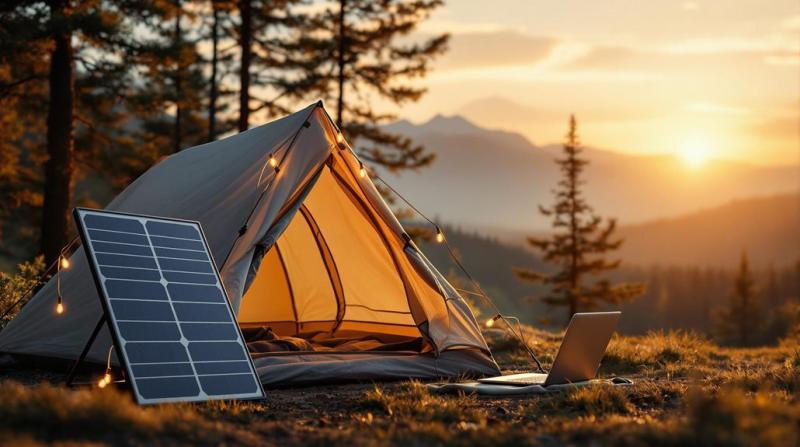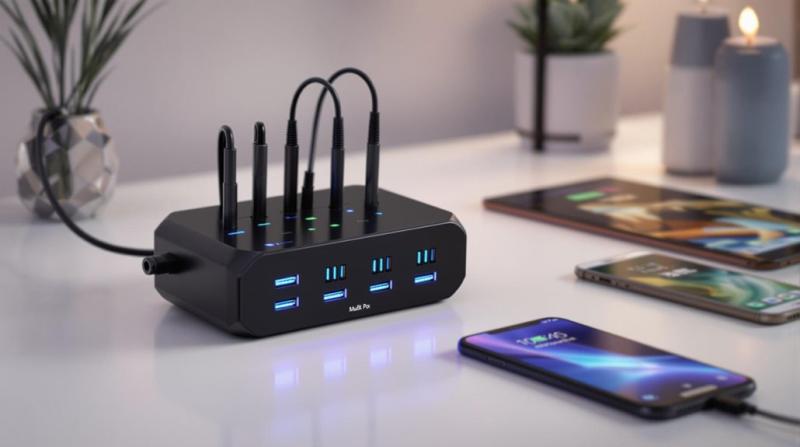When it comes to picking the best power station capacity, it's all about what you need. Are you just charging small devices? Then something around 100 Wh should do the trick. But if you're thinking about running larger appliances, you'll want to look at capacities over 2,000 Wh.
So, let's talk about camping. If you're heading out for a short trip, a power station with a capacity of 200-600 Wh is usually enough. But for those longer adventures, you might want to bump that up to 700 Wh or more.
Now, if you're powering outdoor devices, you'll need to consider how long you'll be using them and what their power requirements are. A good range to aim for is 500-2,000 Wh.
And here's a little tip: always add a 20% buffer to account for efficiency.
Understanding these factors will help you pick the right capacity, ensuring you get the performance and usability you need.
Understanding Battery Capacity
Alright, let's dive into understanding battery capacity and why it's so crucial. When you're evaluating battery capacity, you're basically looking at how much energy a power station can store and provide. This is usually measured in watt-hours (Wh) or amp-hours (Ah). This number tells you how long you can keep your devices running before you need to recharge. So, it's a big deal when you're deciding which power station to go for.
Now, a higher battery capacity generally means you can power more devices at the same time or run high-consumption gadgets for longer periods. But here's the catch—bigger capacities also mean more weight and bulkiness. That can make the power station less portable. So, you really need to think about what you need it for. If you're planning a lightweight camping trip, you probably don't need a super high capacity. On the flip side, if you're using it on a construction site, you'll likely need something with a lot more juice.
Don't forget about the battery's performance efficiency, either. This includes how well it retains charge over time, also known as the self-discharge rate. Even if you have a high-capacity power station, it's not going to be much use if it loses charge quickly when you're not using it.
Common Capacities for Power Stations
Power stations come in a bunch of different capacities, each one designed to handle various energy needs for different situations. When you're checking out power stations, you'll see capacities typically ranging from 100 watt-hours (Wh) to over 2,000 Wh.
Smaller units, like those between 100-300 Wh, are usually great for charging things like smartphones, tablets, and small appliances. These are perfect for personal use or short outings where you just need a little extra juice.
Now, if you're looking for something to power multiple devices for longer periods, you'll want to check out medium capacities, which fall between 500-1,000 Wh. These are awesome for home backup during short outages or for fun activities like tailgating or small camping trips. These units can handle several devices at once, ensuring you stay powered up during those essential moments.
For the heavy-duty stuff, you've got high-capacity power stations, which are 1,500-2,000 Wh or more. These bad boys can handle larger appliances like refrigerators, power tools, or even bigger medical devices. They're super handy during natural disasters or extended power outages because they keep you powered for longer durations.
So, it's really important to match the capacity of your power station to your specific energy needs. If you grab one that's too small, you might find yourself running out of power way too soon. On the flip side, going for a much larger capacity than you need might just be a waste of money.
Ideal Size for Camping
Picking the right size power station for camping really comes down to figuring out what you need to power up. Start by listing out the gadgets you'll be using, like lights, a portable fridge, or maybe just your smartphone and laptop chargers. Each of these has a specific wattage, which will help you get a handle on your total power needs.
Think about how long you'll be using these devices too. If you're going on a longer trip without any place to recharge, you'll want something with a bigger battery. All you have to do is add up the watt-hours (Wh) you'll need by multiplying each device's wattage by the number of hours you plan to use it.
For shorter trips, where you might only use a couple of small devices here and there, a power station in the 200 to 600 Wh range should do the trick. But, if you're looking to power multiple gadgets or heavier-duty stuff like a coffee maker or a camping stove, you'll probably want something with at least 700 Wh.
Don't forget about weight and portability. You'll need something you can easily lug to your campsite. So, strike a balance between capacity and weight to make sure it's not a hassle to carry around.
In the end, the perfect size is really about meeting your specific needs while making sure you've got enough juice without breaking your back.
Powering Outdoor Devices
So, when you're thinking about powering outdoor devices, it's super important to figure out the sweet spot for your power station's capacity.
Like, you really need to check out how much juice your gadgets need so you don't end up frying your system.
If you match up the capacity with what your devices crave, you're all set for a smooth and reliable experience on your outdoor adventures.
Ideal Capacity Range
Choosing a power station with a capacity between 500 and 2,000 watt-hours is often ideal for reliably powering outdoor devices during trips or activities. This range strikes a balance between portability and sufficient energy reserve, allowing you to operate multiple devices without overexerting the power station's limits.
For short trips, a capacity closer to 500 watt-hours is often adequate. You can easily charge smaller electronics like smartphones, tablets, or portable speakers without any hassle.
However, if you're planning longer excursions or using higher-consumption devices, aim towards the upper end of this range. A 1,000 to 2,000 watt-hour capacity can support additional needs, including medical equipment, small refrigerators, or power tools.
While you'll benefit from increased capacity, it's important to take into account the weight and size trade-off. Larger capacities tend to be bulkier and heavier, affecting transportability.
So, assess your specific power requirements and trip duration to make an informed choice.
Ultimately, selecting a power station within this range guarantees you'll have the energy needed to stay connected and powered up. It offers peace of mind during your outdoor adventures.
Device Power Requirements
Understanding the power requirements of your devices is super important when you're planning to use a power station during your outdoor adventures. Each gadget has its own wattage needs, and knowing these numbers helps you make sure your power station can handle them.
First things first, check the power specs on each device you want to use. You can usually find this info listed in watts. Take a laptop, for example. It might need anywhere from 50 to 100 watts. On the other hand, a portable cooler could draw up to 60 watts continuously. If you plan on using multiple devices at the same time, you'll have to add up the total wattage to make sure you don't overload your power station.
Most portable power stations will tell you their continuous and surge capacity. These are crucial numbers to look at to avoid any premature failures or sudden shutdowns.
Now, think about how long you'll be running these devices. A power station that can handle a high watt load for a short time mightn't be the best choice for gadgets that need power for longer periods.
Also, don't forget about the peak surge requirements! Some devices, like power tools, can draw a lot more power when they start up. Really understanding these needs will help you pick the right power station. This way, you can maximize efficiency and make the most out of your outdoor time.
Comparison of Lithium Vs Lead-Acid
So, let's talk about lithium and lead-acid batteries.
First off, when you put them side by side, the weight difference is pretty obvious. Lithium batteries? They're way lighter, so you can easily carry them around. On the other hand, lead-acid batteries feel like you're lugging around a bag of bricks. Not exactly ideal if you're planning to use them outside.
Now, let's chat about how long they last. Lithium batteries totally steal the show here—they generally last way longer than lead-acid ones. This longevity means you're not just getting more bang for your buck, but you're also saving on costs over time. Pretty cool, right?
Weight and Portability
Comparing the weight and portability of lithium and lead-acid power stations reveals some pretty big perks for lithium models.
They're generally lighter and more compact, which makes them a breeze to transport and set up in all kinds of environments. Just think about it: a typical lithium power station might weigh around 30 to 50% less than its lead-acid counterpart. So, when you're heading out for a camping trip or dealing with an emergency, you can just grab it and go.
And size-wise, lithium units often take up way less space. This means you can make better use of the room in your vehicle or storage area. If mobility is high on your list of priorities, this is a huge win.
But it's not just about the weight. Lithium batteries also have a higher energy density. In plain terms, they can deliver more power without the bulk you'd get with lead-acid models. This makes them super handy, especially if you're moving around a lot.
Whether you're bouncing between job sites or setting up in a remote location, having lightweight gear can really save you some hassle.
Lifespan and Longevity
So, here's the deal. When it comes to portability, lithium power stations are already a win. But guess what? They also blow lead-acid models out of the water when it comes to lifespan and longevity. In the long run, this makes them a way more cost-effective choice.
Typically, lithium-ion batteries last between 2,000 to 5,000 cycles, depending on how you use them and the brand. On the flip side, lead-acid batteries usually give you only 500 to 1,000 cycles. That's a huge difference! With lithium, you're getting more than double the operational life.
And there's more. Lithium batteries tend to hold on to their capacity much better over time. After a thousand cycles, they still retain about 80% of their original capacity. Lead-acid? Not so much. They might drop to around 50% or even lower after just a few hundred cycles.
Plus, lithium batteries can handle deeper discharges, letting you use more of the battery's capacity before needing a recharge. This deeper discharge capability really adds to their longer lifespan.
Oh, and did I mention? Lithium batteries charge faster and don't suffer from sulfation, which can really mess up lead-acid batteries. So, when you invest in lithium, you're not just thinking about immediate performance. You're looking at the long-term benefits, thanks to their superior durability and efficiency.
When it comes to longevity, lithium clearly takes the crown.
Calculating Energy Needs
Understanding your device's wattage requirements is super important for figuring out the energy needs of your power station.
First things first, identify the wattage rating of each device you plan to power. You can usually find this info on the device itself, in the user manual, or on the manufacturer's website. Once you've got the wattage, you're ready to move on.
Next up, think about how long you'll be using each device in hours. Multiply the wattage by the hours of use to get the total watt-hours consumed per device. For example, if a device uses 100 watts and you plan to use it for 3 hours, you'd calculate it like this: 100 watts × 3 hours = 300 watt-hours.
After that, add up the watt-hours for all your devices. This total is basically what your power station needs to handle. It's a good idea to factor in a buffer, usually around 20%, to cover any inefficiencies and potential energy spikes when devices start up. So, if your total watt-hours come to 1,500, adding a buffer would give you a recommended capacity of about 1,800 watt-hours.
Finally, make sure the continuous output rating of your power station is at least as high as the combined wattage of your devices at any given time. This step helps avoid overloads and extends the lifespan of your equipment.
Future Trends in Battery Technology
Emerging advancements in battery technology are set to enhance energy storage efficiency, extend lifespan, and reduce charging times, greatly impacting the performance of power stations. As you consider your power station's capacity, understanding these trends becomes essential for optimizing your setup.
One big thing happening right now is the development of solid-state batteries. Unlike the regular lithium-ion batteries we're all used to, solid-state designs offer higher energy density. This means they can last longer and take up less space. This shift towards solid-state can really boost both the performance and safety of your energy storage systems.
Additionally, there's the integration of artificial intelligence and machine learning into battery management systems. These techy tools analyze how you use energy and the conditions around you, making energy distribution smarter and predicting when maintenance is needed. By adjusting operations based on real-time data, you can really bump up your system's efficiency.
Furthermore, let's not forget about the advancements in fast-charging technologies. Innovations like ultracapacitors and optimized charging algorithms are making it possible to charge up way quicker. This means your power station can be more responsive to demand changes, whether it's for your home, business, or even industrial setups.
Lastly, recycling methods and sustainable sourcing of materials are really gaining traction. As people become more aware of environmental issues, these processes are improving. The best part? Not only will the environmental footprint of battery production go down, but costs will likely drop too.
Staying in the loop about these trends allows you to make smart choices about your power station's capacity and overall energy strategy. This way, you'll be ready for a future that demands more efficient and sustainable energy solutions.



